The power of sound and the way our brains process it is responsible for all facets of our learning. In fact, deficits in our ability to process sound effectively can cause not only learning challenges, but can impact on things like our flexibility, muscle tone and sensory issues.
I have never worked with a child with Autism or Asperger’s in the last 30 years that didn’t respond to music and I have found music therapy for autism extremely powerful.
Now that I better understand why that is, I recognize the structure, patterns, and dynamics of music speaks to the brain of a person with autism and has the ability to open parts of the brain in a way that nothing else can.
I have had non-verbal children learn to sing the words to songs. That can then be used to further communication, even if unconventional.
Children with Autism (ASD) or Aspergers commonly have auditory processing challenges, sensory issues and many times, retained primitive reflexes. Music is key when working with these children.
Diana’s unique musical, sound therapy and educational background, gives her a unique perspective in working with children on the spectrum.
“The structure, patterns and dynamics of music speaks to the brain of a person with autism and has the ability to open parts of the brain in a way that nothing else can”
diana f cameron
Children with Autism or Aspergers suffer from sensory overload because they don’t have the capacity to filter out much of the information coming in as we do.
Just stop for a minute and listen (really listen) to all the sounds around you – even those you have been filtering out.
Depending on where you are there is probably the sound of traffic, air conditioners, a dog barking up the street, people talking, sounds of machinery, birds in the trees, music playing.

We live in a world where there is sound happening all the time but most of it we filter out because our brain recognizes that it is not essential sound.
For a child on the spectrum, all that sound and noise often comes in at the same volume and none of it is filtered out.
It is a constant bombardment of sound and information for the brain to recognize and process.
Then, with impaired processing skills because of the auditory processing delays or malfunctions, it further complicates the issue.
The brain will protect the body (and itself) by shutting down. You might see behavior such (but not limited to):
- melting down
- screaming
- head banging
- hands over their ears
- holding their head
- withdrawal
- Drooling
- Body slumped over
We see these types of overwhelm manifested in these behaviors because the central nervous system (CNS) just can’t cope. It is often the processing of low tones that isn’t happening effectively as these are foundational for all other processing of sound. Music therapy for autism is one way that we can train the brain to process sounds differently and more effectively, minimizing overload.
Alfred Tomatis: Revolutionary for His Time
Alfred Tomatis was a French ear, nose and throat specialist who was born in 1920. His research was revolutionary and still serves as the basis for music therapy for autism individuals that we use today.
In his book, “The Power of Sound” Joshua Leeds states the six key principles of how sound affects the body. These six things were:
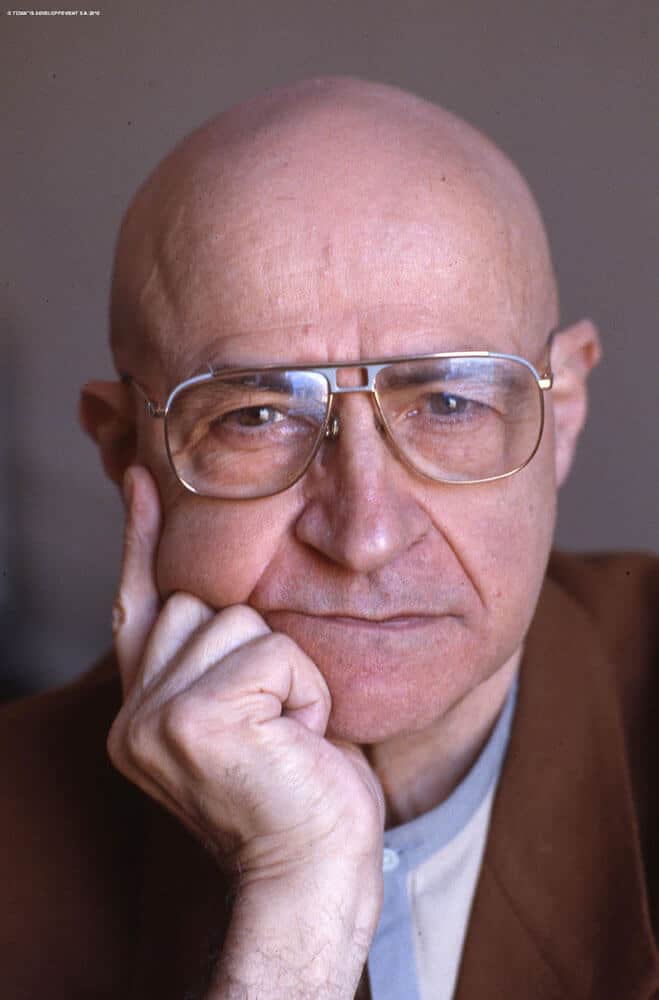
- The ear is like a battery with a primary function of converting sound waves to electrical waves that charge the cortex of the brain.
- Sound is a nutrient; we can either charge or discharge the nervous system by the sounds we take in through both air and bone conduction
- There is a distinction between hearing and listening. These two auditory functions are related but distinct. Hearing is passive, listening is active and conscious. On a visual level, this corresponds to the difference between seeing and looking. Listening and looking are active focusing processes.
- The quality of an individual’s listening ability will affect not only spoken and written language development but also alertness, creativity, and the ability to focus. Listening abilities also influence communication thereby shaping social development, confidence, and self-image.
- Communication is a process that begins in utero. The unborn child hears as early as the fourth month after conception. Sound literally helps the brain and the nervous system of the fetus to grow.
- The voice can only reproduce what the ear hears. We can only duplicate the sounds that we can hear. This is known as the Tomatis Effect.
The steady beat of music and rhythmic pulses are key to children on the spectrum and as we work with low tones which are grounding. This allows us to not only change the brain, but lay the foundation for higher level learning.
diana f cameron
Let’s look at number 2. “Sound is a nutrient; we can either charge or discharge the nervous system by the sounds we take in through both air and bone conduction.”
One thing Tomatis used to say is that the body is a giant ear. We don’t just process sound through our ears (air conduction) but also our skeletal system (bone conduction).
When I work with a client with sound therapy, we use headphones that go across the head. In this band there is a sensor at the top of the skull. This allows sound to be produced and processed by bone conduction as well as air conduction. The two together are much gentler and the gains we see are greater in a shorter period.
You can even safely continue listening if you have an ear infection by turning off the air conduction component and just listen with bone conduction.
Sound is a nutrient. It can either charge or discharge the central nervous system
alfred tomatis
It is a fascinating experience. The first time I listened with just the bone conduction sensor activated, I could hear every instrument in the orchestra. It was muffled like you were underwater, but all the sounds were there.
I was astounded and it reiterated to me the amount of work our body and ears must do 24/7 in processing sounds that come at us in our environment.
That is why our voice sounds different when we hear a recording of it. When we speak it resonates through our skull (bone) and our ears, so we hear it with both. When recorded, we experience an air conduction version of it (which we usually find very unappealing).
It is a system that we can’t shut off, it is working all the time, even when we sleep. There is a saying in the sound therapy world “We don’t have earlids.” Think about our visual system. We shut our eyes we give it a rest, but with our auditory system, we can’t do that.
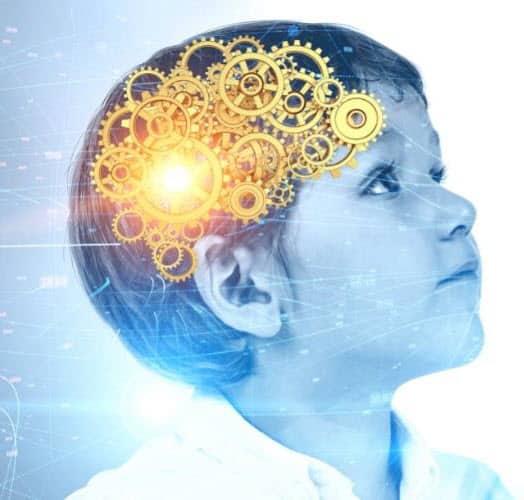
We can hear through walls and around corners. Even if we put on noise cancelling headphones, our body is still processing.
Once the sounds come in through these two avenues (body and ears) they are then transformed into electrochemical signals and sent to the various auditory pathways to the brain.
For children and adults with poor auditory processing skills, this can be exhausting. Children with autism have auditory processing challenges. I have not worked with one in the past 30 years that didn’t. It just seems to go with the territory.
Children on the spectrum also have poor filtration systems to filter out unwanted noise and babies’ filters are the most fragile yet. The more listening and processing we do, the better our auditory skills.
So, children on the spectrum, those with ADHD, young children and babies may already have struggles in this area.
Music Therapy for Autism Targets Listening Zones
Tomatis also discovered that depending on the pitch (Hz) of the sound, it had a different effect on the body. Advanced Brain Technologies base their sound therapy (of which I am a certified practitioner) around these three zones which are:
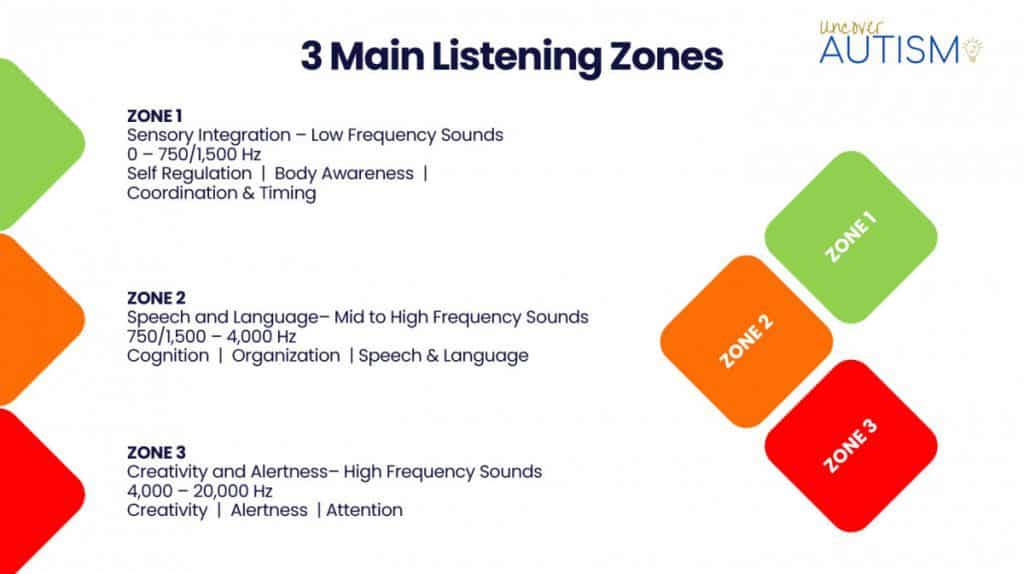
Zone 1: Sensory Integration
Zone 1 is where children with ASD really struggle and as it is the foundation for all other processing, when doing sound therapy we do a lot of work in this zone.
This zone includes all the low frequency tones. These affect our bodies, self-regulation, body awareness, coordination, and timing. Not processing tones in this range causes problems because it is the foundational level for all higher functions.
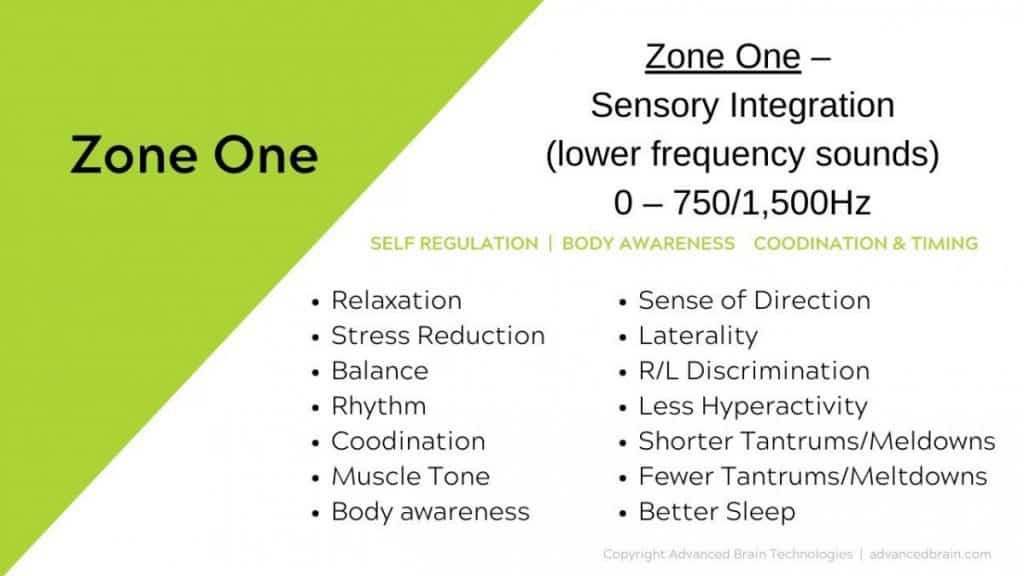
Poor processing of these pitches will result in some or many of the following being difficult:
- Being able to relax
- Reducing your stress
- Balance
- Sense of rhythm
- Coordination
- Muscle tone
- Body awareness
- Sense of direction
- Laterality
- Right and left discrimination
- Tantrums and meltdowns will be longer
- The frequency of tantrums and meltdowns will be more
- Poor sleep
Low level tones are the basses, cellos, certain timpani, and tubas of an orchestra. Naturally occurring sounds in this range would be things like:
- Large dogs barking
- Lawnmowers
- The sound of thunder
- Earthquakes
- Whales
- Elephants
- Waves crashing on the beach
- Men’s voices
Zone 2: Speech and Langauge
Zone Two contains mid and upper-level frequencies, including our speech and language, most of which sits between 3,000 – 4,000Hz.
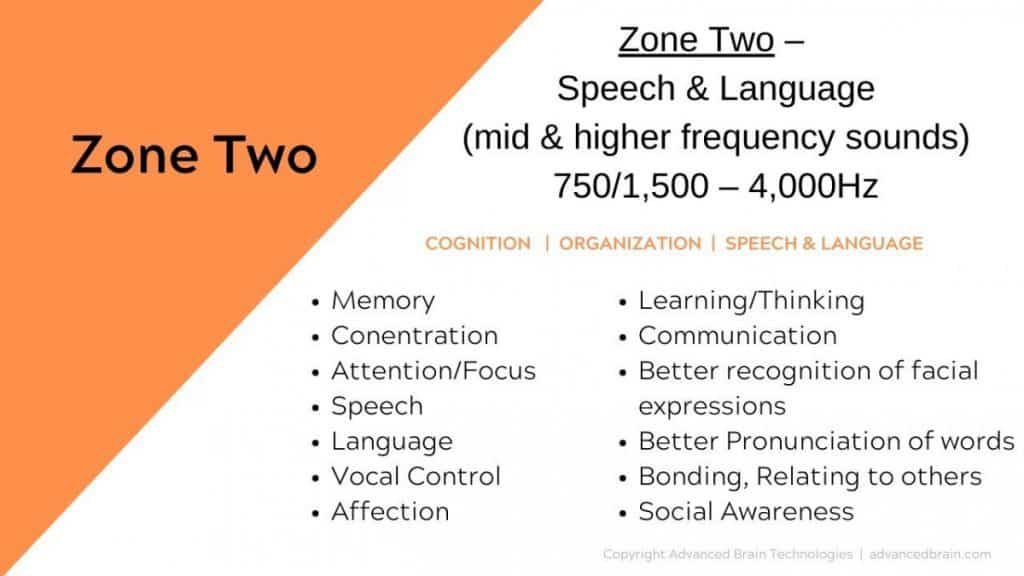
If you are having issues with processing sounds in zone two then you might have difficulty with one or more of the following:
- Processing higher voices like young girls or women
- Beginnings or endings of words. You might swap out sounds like “free” for “three”.
- Rhyming words – hearing the similarities and differences of sounds
- Forming certain consonants or vowel sounds correctly (speech may be hard to understand because the child is producing what the brain is “hearing” but because processing is not accurate, it comes out differently than what you hear, or how you pronounce words
- Chinese whispers or interpreting what someone has whispered in your ear
Mid to higher level tones are the flutes, piccolos and violins of an orchestra. Naturally occurring sounds in this range would be things like:
- Birdsong
- Someone whispering in your ear
- Babbling streams as the water goes over rocks
- Rainfall on your umbrella
- Dogs whining
- Collar tags jingling
- A child squealing
- Crackling of pine needles as you go on a walk
- Leaves rustling in the wind – Scientists have found that “Needle-like leaves, or petioles, shed vortices as the wind oscillates round them, creating the high-pitched, romantic whisper of conifers.”
Music can be a powerful tool when working with children with autism. I have seen children with no speech be able to sing songs. I have seen children with limited flexibility with extreme OCD be able to bend to fit in with changes in
The steady beat of music and rhythmic pulses are key to children on the spectrum and they come to process low tones more effectively which help to ground them, the brain is changed and lays the foundation for higher level learning.
